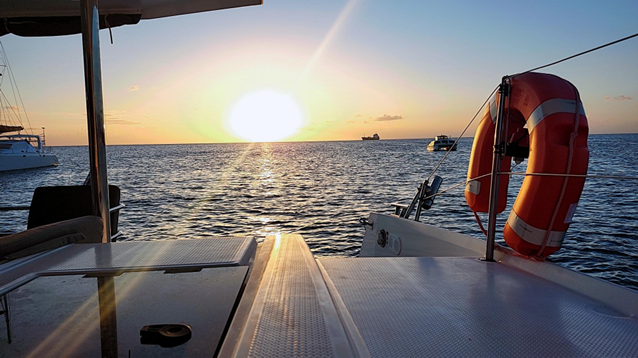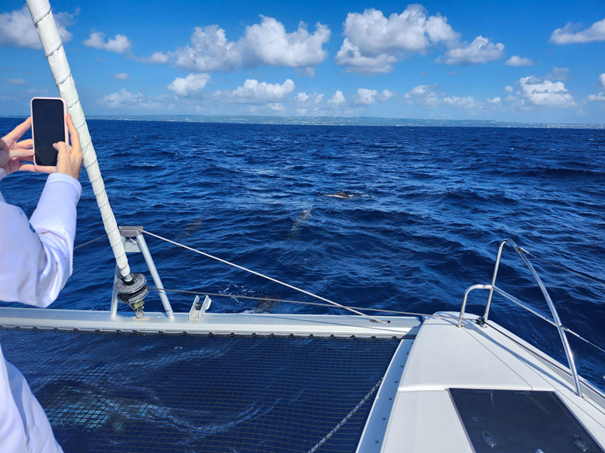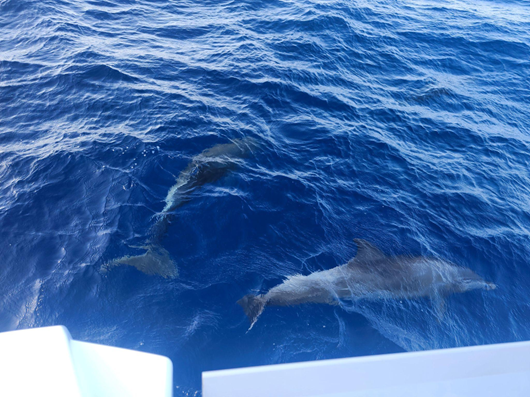The Marine Spatial Plan and its partners continue their efforts to understand the presence and migration patterns of marine megafauna within Barbados' waters, with the second cetacean survey being conducted October - November. The survey aimed to determine the whale, dolphin, and porpoise species that can be found in the island's waters.
The Barbados Fisheries Division's Julita Fergusson had the opportunity to take part in the survey. Below are her accounts during her time out at sea!
"Our cetacean monitoring adventure began at six in the morning on the 30th of October 2025 from the Speightstown pier. Once the bags and equipment were organized and introductions were finished, our crew of 9 persons set out to sea and the work began.

I started on a tablet device which utilised ObsEnMer software. This allowed us to continuously track our boat's location, log sea conditions, boat speed, weather, seabird or vessel sightings and record the exact coordinates of any cetaceans spotted. The second aspect of being with the tablet was listening and recording cetacean sounds heard on the hydrophone (underwater microphone).
The next task was observation. This task was done from the top of the boat. Each observer scanned the ocean for any sign of unusual movement on the water. Usually this would be large splashes, dorsal fins or tail flukes. When the animals were sighted, we called out their location, estimated group size, interesting behaviours, and any calves present. Photographs were taken of the dorsal fin in order to identify each individual. The photos we took were sorted at the end of the day and used to determine whether the cetaceans we saw were new or had been recorded in an earlier survey.
Our days were structured around two-hour shifts, rotating between observation, tablet/data recording and rest. The overall combination of our efforts ensured that we successfully spotted and recorded 10 sightings of cetaceans with many photo-identifications made. Bottlenose dolphins were the most abundant cetaceans we saw and then there were single sightings of a dwarf sperm whale, and a pod of melon headed whales.
The melon-headed whale pod was the largest we observed, traveling in a group with around 90 individuals on average which included around 5 calves. It truly was a spectacular sight.



Snapshots during the expedition at sea, with bottlenose dolphins depicted (Photo credit: Julita Fergusson).
Overall, the experience combined science with moments of excitement and challenge. I thoroughly enjoyed every aspect of the trip. The thrill of spotting a distant dorsal fin, listening to the dolphin whistles and clicks on the hydrophone, even sorting through all the photos at the end of the day, was exciting for me. Although the sun was intense at times and the sea conditions were occasionally difficult, the teamwork, rotating shifts and rewarding sightings made it a meaningful and successful survey.
It is my hope that the data collected will support future monitoring efforts and help us better understand the role the cetaceans play in our marine environment here in Barbados."
Cover photo credit: A melon-headed whale captured by the Caribbean Cetacean Society.

